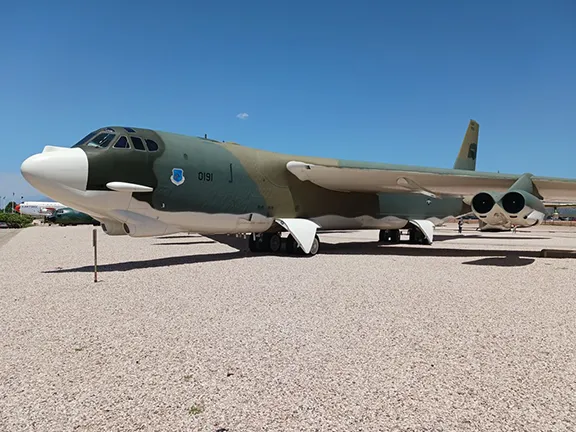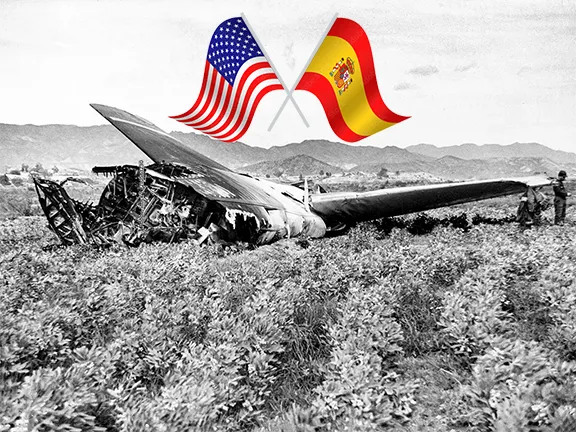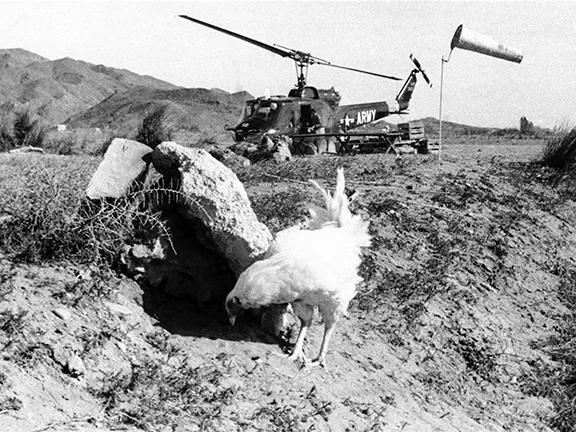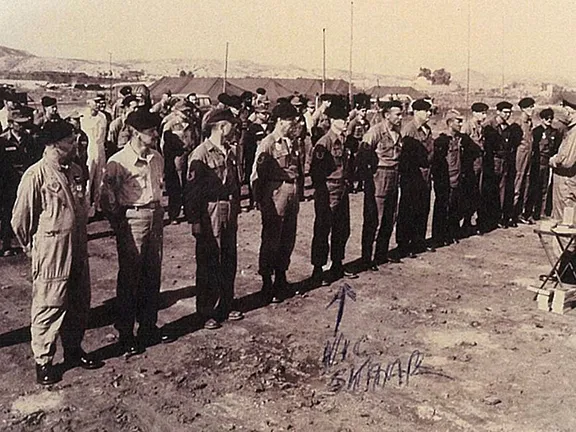The Palomares Incident
Recovering the Mediterranean Bomb
An account of the search and recovery mission to locate the elusive 'Mediterranean Bomb,' lost at sea after a mid air collision over Palomares. Some of the challenges faced by a team of experts, including the use of the remarkable submersible, Little Alvin. At the time, this was the most extensive underwater search in history.
By Nick Nutter on 2023-07-23 | Last Updated 2025-05-20 | The Palomares Incident
This article has been visited 2,973 times

USS Petrel
Assembling the Task Force
The first United States ship to appear on the scene was a fleet tug that had been requested to help locate survivors from the crash. Since by the time the tug arrived, some seven hours after the collision, all the survivors had been accounted for, the tug was released from the scene.
However, by the third day, it became apparent that an air-sea search was going to be necessary to locate Bomb 4, that became known as the 'Mediterranean Bomb'. The Air Force again requested assistance from the Navy. The Commander Sixth Fleet responded and sent three ocean going minesweepers and a four man Explosive Ordnance Disposal team. Within days the task force had grown to include thirty-four vessels manned by 3425 personnel, military and civilian. In addition, as efforts to find the Mediterranean Bomb from the surface failed, the task force was augmented by four manned submersibles and three unmanned vehicles.
Do you enjoy my articles? For your reading pleasure, this website does not carry third party ads. You could help me write more articles by buying me a cup of coffee.
Aircraft Salvops Med
The Assistant to the Secretary of Defence (Atomic Energy) requested, through the Assistant Secretary of the Navy (Research and Development) that the Navy use all means to accomplish the task before them. On Sunday, 23 January, the CNO established AIRCRAFT SALVOPS MED and directed mobilization of Navy resources to assist in the search and recovery of the lost nuclear weapon. Since the Navy is responsible for the disposal of explosive ordnance discovered within the ocean, the task of locating the missing weapon was set about in earnest. "We're not looking for a needle in a haystack," said Rear Admiral William S. Guest, commander of the Navy's recovery task force at the time. "It's like looking for the eye of a needle in a field full of haystacks in the dark."
First Search Attempt
The first efforts to find the Mediterranean Bomb involved dropping probes from the surface and 150 qualified divers who searched to 120 feet (37 m) with compressed air, to 210 feet (64 m) with mixed gas, and to 350 feet (110 m) with hard-hat rigs.
By the end of January, the bomb had still not been located, despite the assistance of Francisco Simo Orts who had witnessed the bomb enter the water and who was now employed as an advisor by the United States Navy.
At the end of January, the Navy enlisted the Human-Occupied Vehicle (HOV) Alvin submersible to assist in the search.
Little Alvin's Story


Little Alvin in the moon pool
On the 1st of February, Little Alvin was transported to Otis Air Force Base in Falmouth, Massachusetts, loaded onto a cargo plane, and airlifted to Rota, Spain, for what would be its inaugural search and recovery mission. Two weeks later, Alvin plunged into the Mediterranean to begin the search. On board were Chief Pilot William O. Rainnie, who helped design and build the sub, engineer Marvin J. McCamis, and pilot Valentine P. Wilson.
Exploring the Almanzora Canyon


Graphic of the Almanzora Canyon
Alvin began making daily dives to depths of 3,000 feet along an underwater canyon carved out of the seabed by the Rio Almanzora. Visibility was less than 30 feet. It was not until the tenth dive, on the 1st of March, forty two days after the collision, that the crew of Alvin obtained a target some 400 feet long. The target proved to be the track taken by the bomb as it slid down the 2500 foot slope on one side of the Almanzora canyon. It took Alvin until the 15th of March to re-find the furrow and follow it to the bomb enshrouded in its parachute at a depth of 2550 feet lying on a 70 degree slope.
Close Call
Alvin was working from a Naval Research ship, USNS Mizar. On board the Mizar, the crew jury rigged an aluminium hook on the end of 3000 feet of nylon rope. This was lowered through the moon pool in the hull of the Mizar and Alvin took the hook and attached it to the parachute harness. Unfortunately, the pressure of water on the parachute was too much for the hook that straightened out allowing the bomb to again slide into the depths. This time it landed on the same canyon slope except lower down at a depth of 2800 feet. A second attempt to raise the bomb using the same method almost ended in tragedy as the parachute tried to wrap itself around Little Alvin, which would have prevented the submersible from rising to the surface. The submersible thrust away just on time.
Mediterranean Bomb Recovered


The Mediterranean Bomb on USS Petrel
On the 7th of April, the Navy decided to use an unmanned cable controlled underwater recovery vehicle (CURV) to recover the bomb. However, the CURV became totally entangled in the parachute and a delicate lifting operation of both the bomb and CURV brought both to a depth of 100 feet where divers from the submarine recovery vessel, USS Petrel, were able to attach cables to the bomb itself. The Mediterranean bomb was finally secured and transferred from Petrel to the destroyer tender, USS Cascade who took the bomb back to the United States.
It took a total of 80 days to find and recover the 'Meditearranean' Bomb.
References


USS Cascade
1. The story of Little Alvin
2. Palomares Summary Report - Field Command Defense Nuclear Agency Technology And Analysis Directorate Kirtland Air Force Base, New Mexico - 15th January 1975
3. Wikipedia - 1966 Palomares B-52 crash
Do you enjoy my articles? For your reading pleasure, this website does not carry third party ads. You could help me write more articles by buying me a cup of coffee.
 1: Chrome Dome
1: Chrome Dome 2: A Nuclear Wake-Up Call
2: A Nuclear Wake-Up Call 3: Diplomatic Relations
3: Diplomatic Relations 4: Operation Broken Arrow
4: Operation Broken Arrow 6: The Clean Up
6: The Clean Up